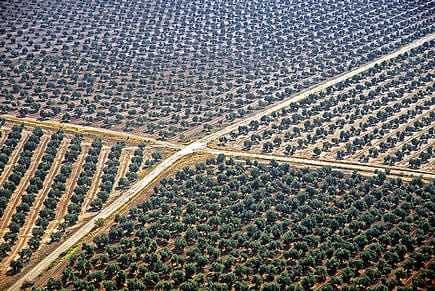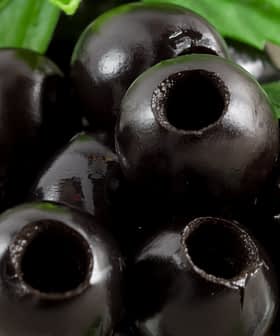
An army of workers — and these days few of them foreign — is poised to start the massive operation that is Spain’s annual olive oil harvest.
With 282 million olive trees to shake and pluck, spread over 2.4 million hectares of plantations, it creates the equivalent of 17 million days of work, says the European Program for the Promotion of Olive Oil.
On the bright side is the fact that many Spanish olive oil producers have “staged a revolution in modernization in recent years.” According to the program, this has involved a shift to mechanical means of harvesting in various degrees, cutting costs and reducing the length of the harvest, and thereby improving oil quality.
“The fruit is collected at the ideal time and taken promptly to a mill for processing, ensuring the optimal outcome,” the program said in a press release.
And the mills — nearly all 1,746 of them — have also modernized, most now using the two-phase extraction system, “which uses only mechanical (and not chemical) means to extract the oil, and is also one of the most efficient for reducing energy and water consumption.”
But on the darker side is a warning this week from ASAJA, an agrarian association for young farmers, that some producers would be better off letting their olives rot.
Having taken into account Spain’s olive oil pricing crisis and costs such as for harvest and transport (€0.03 – 0.05/kg of olive oil) and milling and write-off for deprecation (€0.27/kg of olive oil), ASAJA’s Jaén branch says that unless the average net yield in a farm is above 18 percent at the time of harvest, “it would be cheaper to let the fruit fall to the ground than to take it to the mill.”
Though rain came last week, a long stretch of dry skies and above-average heat had already affected oil content of olives in rain-fed regions, the Andalusian branch of agrarian organization COAG said. “Normally a kilo of olives has an oil content of 23 percent but now it’s going to be about 17 – 18 percent.”
ASAJA spokesman Luis Carlos Valero urged growers to carefully evaluate the yield of their trees before starting to harvest, “in order to avoid a nasty surprise.” The research suggested that many olive farms would not break even, and this was without even taking into account other expenses, such as for cultivation, pest control, irrigation, and pruning, he said.
Also risking a nasty surprise are the hordes of people heading south in Spain in the hope of work on the harvest. According to local newspaper Diario Jaén , authorities are warning anyone without a job contract to stay away from Jaén, one even saying that the region, which has an unemployment rate of 31 percent, “didn’t really need any laborers not already there.” But already there are reports of dozens of immigrants sleeping in the streets.
Back in 2008, when the jobless figure was 11 percent, Time magazine reported on a “social emergency” being declared in Jaén due to many of the 9,000 or so immigrants — in search of once plentiful seasonal work there — instead “finding the jobs have gone to newly out-of-work locals, who are only too happy to collect $72 for the back-breaking job of collecting olives.” There are fears the situation will be far worse this year.








